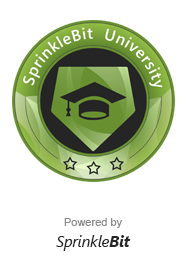Opening a Brokerage Account
Opening a Brokerage Account
Now that you know a little bit more about the various advantages and disadvantages of the main investment vehicles available today, let’s dive a bit into in the United States.
Before doing this, however, as we discussed previously, it is important to identify your personal investment goals as well as your level of risk. Let’s get started on what information you should be ready to provide for opening a brokerage account.
Personal Information
Why do brokerage firms ask so many personal questions on their applications? Because Financial INdustry Authority (FINRA) requires a broker to get to know their clients. As such you’ll need to provide them with some info.
Who You Are:
-
Name and Address
-
Whether you are over 18 (you’ll need to provide a legal form of identification) Sidenote: Don’t worry, if you are under the age of 18, you can still invest but your parents will need to set-up a custodial account where they agree to bear legal responsibility for your actions. You’ll still be able to control this account, but it will have your Mom and Dad’s names on it as well.
-
Country of Citizenship
How to Report your Taxes on your Potential Gains:
- Social Security number or Taxpayer ID
- Marital Status
What Kind of Investor you Are:
- Employment Status
- Occupation
- Investment knowledge and experience
- Your net worth
Finally, the brokerage firm will want to know if you are associated with a different FINRA member in order to prevent insider trading and other illegal activities.
Additionally, you will need to establish what kind of account you want to open whether it be a margin account or a cash account. However, keep in mind that most brokers require a minimum deposit of $2,000 to open a margin account.
Investment Objectives
- Is my primary goal to generate income or to appreciate my capital at a high rate?
- Am I very risk-averse and want to use my investment portfolio as a hedge against inflation, or am I risk-loving and want to see huge returns?
- What’s my time horizon? Do I need the funds to be liquid short-term or long-term?
- What’s my tax situation? Can/should I use my investments as a tax relief?
Once you’ve answered all these questions, attach a scanned copy of your ID and other documents if needed, and submit your application. If you submitted all the right information and your brokerage firm was able to verify your identity, most firms will be able to set-up your account within 24-48 hours.
Funding Your Account
Now you need to fund your account. Using an ACH (Automated Clearing House) is the best and most convenient way of funding your account. The first step of using an ACH is to sync your bank account with your new brokerage account. For this, you need your bank name, account number, and branch routing number. Once synced, you can use an ACH to transfer money between your brokerage account and bank account.
There are other ways of funding your new brokerage account such as a wire transfer or by sending in a check. However, in this digital edge, sending a check can be a bit of a hassle, while a wire transfer typically incurs higher fees from your bank.

